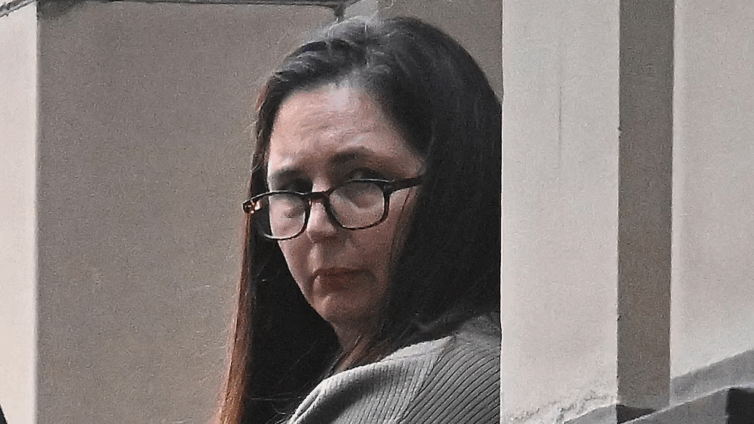Interview: Artist Alex Chinneck turns urban space upside down | STYLEPARK
Surrealism has a powerful effect because it playfully disrupts the familiar. This is especially true for work in public spaces, where you already give up a lot of control. Using familiarity as a kind of platform on which to build is an accessible mechanism. This gives the work an immediate personality that many people can understand and interpret regardless of their age or prior knowledge. You work with the materials, objects, structures and environment of the everyday world. And you do so in a public context. There is also something optimistic about lending a certain fantasy and magic to things that are otherwise perceived as mundane. Being able to distract oneself from reality from time to time is so important. I believe that the most beautiful illusion creates a feeling of lightness, so I don't want to burden my work with too many meanings, even though there is a lot of thought behind the scenes about technique and context. Accessibility is important to me, even if it carries the risk that the works will be perceived as overly simplified.
I would say that I explored many different industries. The best way to learn about manufacturing is through physically making and you don't often get that opportunity within architecture practices. Meeting new people and encountering new processes allowed me to develop a broad understanding of materials and their technical possibilities. I basically started out painting until I realised that I couldn't add anything new to the discipline. Instead, I always liked how sculpture can be developed through new technical and material possibilities. I also wanted to see British industry collaborate with the arts. Fortunately, many companies that specialise in a particular process were excited about a new challenge and recognised the marketing potential that this unusual collaboration offered them. Industry has opened up opportunities for me to realise my ambitious ideas. This connection immediately gave the works the potential to achieve architectural scale. Since my time at art school, I have been committed to the idea that my work shouldn’t be limited to my technical expertise, skillsets and the size of the space in which I work. In my opinion, this is essential for creative freedom. The more creative freedom you have, the more you can let your imagination run wild. I like the idea that through collaboration, especially with people who have the ability to realise significant sculptural ambitions with me, more impressive and far-reaching ideas can emerge and be physically manifested.
Over the years, I have been able to build up an extensive library of materials and gain expertise in various industrial processes. Nevertheless, every place, every invitation and every location is different. I like the diversity of the different contexts in which I work. That's why it's so nice to work in public spaces. Every new location brings new opportunities and challenges. In most cases, I start with a sketch, a combination of creative ideas and a contextual response to the location. The design for Charterhouse Square references the red brick Georgian architecture that surrounds the square. I also wanted to return to the curved bricks I had already worked with on this project. After the sketch comes digital modelling and refinement of the shape and size to understand which structural aspects are important to me. In this case, the challenge was to make the arches as thin as possible to create a contrast to the large and heavy effect. We have been working with our structural engineers for 12 years, so they have a very good understanding of what we want to achieve structurally. I like the diversity of contexts in which I can work in public spaces. My biggest concern as an artist is not to create something that has already been done and therefore has no visual identity and no unique voice. That's why I use ambition, complexity and risk as tools to hopefully make a unique contribution with my work.
That's a very good question. Every now and then, I feel like I've fallen through the cracks between disciplines. Art, architecture, design, street art – each discipline has its audience, its critics, its reference group, and so on. I don't really belong anywhere, because my work is interdisciplinary. That also has its positive sides, because it allows me to be flexible in terms of materials, processes and locations. The short answer is: I see myself as an artist. I work very idea-based and in the technical implementation I wear many hats, from project manager to sculptor to designer. I approach my art like a designer because the context, the materials, the contributors and the processes are multidisciplinary. For example, I use things that are typically associated with design, industrial design or architecture. But ultimately, these are just tools that help me realise more ambitious artistic ideas. There are times when I move into an area that is more design- or architecture-oriented, where function plays a greater role. At the same time, I enjoy the freedom and absence of the need to function physically that art offers, and I like the fact that it doesn't work so well commercially. The budgets in art are nowhere near as high as in architecture, but I like the creative and sculptural freedom that art offers me. I can work with an art museum, but I can also create works for the London Design Festival, Clerkenwell Design Week or Milan Design Week. The beauty of these invitations is that they are events and festivals whose audience is normally reserved for design and architecture. It's fantastic that I'm invited into these worlds as an artist. So there are many advantages.
The disadvantage, however, as I said before, is that I don't feel like I really belong to a particular world. As a result, I may miss out on a certain amount of recognition or critical acclaim. I could cover my work with conceptual language and spend an enormous amount of time articulating its message and meaning. I've always resisted that because I felt it didn't need it. Even if it doesn't contain profound conceptual messages, it's not free of meaningful reflections on what we do, why we do it, how we do it and for whom we do it. Popular, accessible art is tricky. There is a fine line in my work between public sculpture and stunts, and I have to make sure that it remains sculpture. The art world has placed more emphasis on accessibility lately, in part because institutions seek high visitor numbers and revenue. I have always championed this idea of accessibility, and I like it in art. However, some art critics are unwelcoming to works that are playful, popular and accessible rather than highly conceptual. And so, even after 20 years, my ideas still come up against a brick wall from time to time. I find this way of thinking pretentious and outdated. I have no idea how many projects you have to create before your work is accepted in this area of the industry. After a while, you stop worrying about it and just follow what makes you happy. Creative people are at their best when they do what they want to do. Their work is weaker and more compromised when they do what they think they should do. Working in a multidisciplinary way and not really belonging has advantages for creative development.
I like the idea that a work has its own voice rather than fitting into something that already exists. That's a goal for me. I like the idea that people look at my work and don't say, ‘Oh, that's a sculpture’ or ‘That's a design’ or ‘That's a piece of architecture.’ Instead, they say, ‘Oh, that's a Chinneck.’ It feels like I have to create this kind of multidisciplinary cocktail to make works that feel unique. Instead of sticking to art and the places where art is exhibited and the way people talk about art and think about art, I just feel like I couldn't create anything remotely original with those pre-made ingredients. I felt like I had to borrow ingredients from many different fields – theatre, industry, manufacturing, design, architecture, sculpture – and hopefully try to fuse them into an original manifestation.
He animated the idea of typical America. His stitching together of fantasy and reality into a dark force is so seamless that it seems familiar. Through the music, the cast, and his way of staging, he created a kind of comfortable space and then took us on the most obscure journey. He was incredibly courageous, genuine, ambitious and willing to take risks. He was aware of his audience, but did not let himself be guided by them. I think he was simply driven by art, by his work. He realised early on that you have to do the work you want to do, not the work you should do. That freed him. He strove for creative freedom, both in painting and in film. He is an extraordinary example of this, because his path gives you self-confidence and fearlessness. This exquisite blurring of reality and fantasy is simply incredible. At least, that's my interpretation of David Lynch. He always takes me on a fantastic journey with elements you don't see coming.
Alex Chinneck: I plan to focus on sculpture in the coming year. I would also like to take a bigger step into furniture design and architecture. This requires the right partners. We have designed double-room pods that are essentially brick sculptures. They are both functional and sculptural. I would like to design more 2D works, such as wall collages. The knotted lampposts are already moving in this direction: they are public art as urban design. There is always an appetite for public art, but often public art is the last thing on the budget list. I really like how this work is very sculptural, but at the same time playful and functional. This is an area I would like to understand better. But always with the freedom and playfulness that characterise my sculptures.







_1751880097.jpeg)




